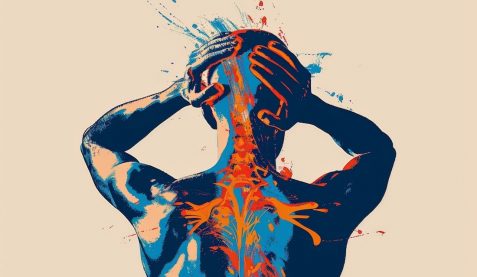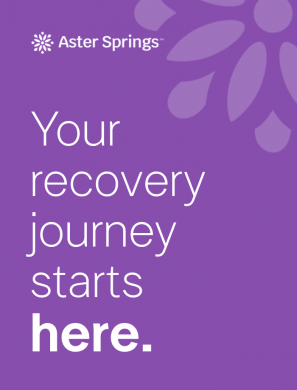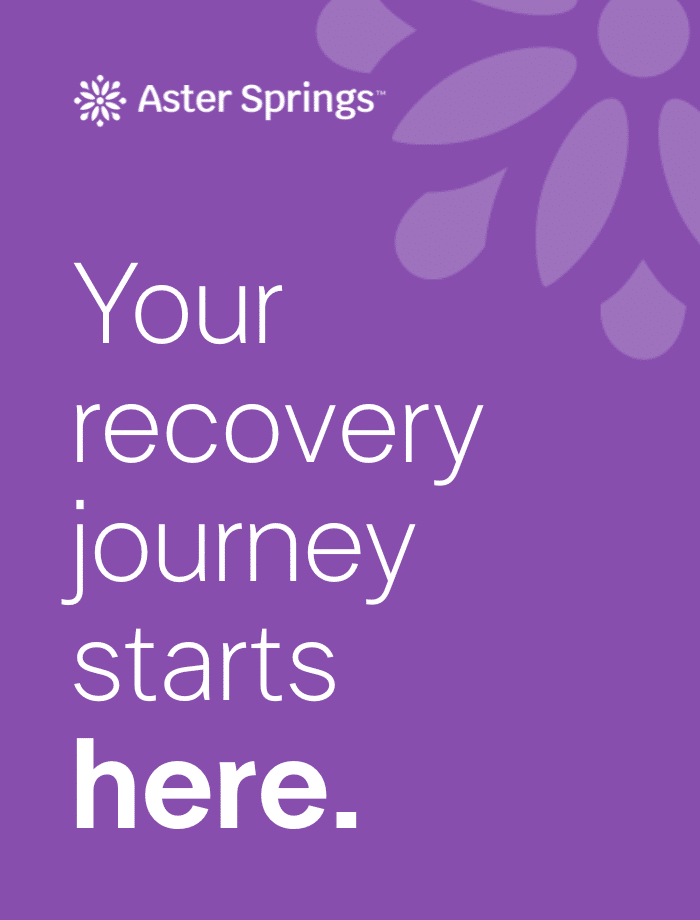Most people want to feel confident in their bodies. For some, that means regular workouts, health eating, or following fitness influencers for motivation. But for others, what begins as a wellness routine can spiral into something more harmful — an obsessive belief that their body is never muscular enough, lean enough, or “man enough.”
This mental health condition is known as muscle dysmorphia — a lesser-known but increasingly recognized subtype of body dysmorphic disorder (BDD). While BDD can involve any perceived flaw — such as skin, nose, hair, or weight — muscle dysmorphia is specifically focused on size, shape, and muscularity. And it’s not just about vanity or wanting to “bulk up.” Individuals with muscle dysmorphia often appear objectively muscular but still see themselves as small, weak, or physically inadequate.
Muscle dysmorphia affects more people than you might think, especially teen boys, young men, athletes, and fitness enthusiasts. Fueled by social media, unrealistic body standards, and toxic cultural messages about what a “real man” should look like, this disorder can quietly take over an individual’s life. It can damage their self-esteem, disrupt relationships and daily routines, and even harm their physical health through overtraining or disordered eating.
In this article, we’ll explore what muscle dysmorphia is, how it’s defined in the DSM-5, what symptoms to watch for, why it’s on the rise, and how it connects to broader mental health and body image issues. If you or someone you care about feels like no amount of muscle is ever enough, this is a conversation worth having.
What is Muscle Dysmorphia?
Imagine this:
A 17-year-old high school senior (let’s call him Jordan) starts lifting weights after being teased for being “too skinny” in gym class. At first, working out feels empowering — he’s gaining strength, building muscle, and receiving compliments. For the first time, he starts to feel confident in his body.
But that feeling doesn’t last.
As the weeks go by, the compliments no longer land. The mirror becomes a harsh critic. Despite visible gains, Jordan only sees flaws. He doubles down — two workouts a day, every day. He isolates from friends, hangs out only at the gym, and becomes rigid with food: weighing meals, counting every gram of protein, and spiraling if he misses a workout. He spends hours comparing himself to fitness influencers on Instagram and TikTok — many of whom use filters, enhancements, or performance-enhancing drugs. Still, Jordan feels small. Weak. Behind.
What Jordan doesn’t realize is that he may be developing muscle dysmorphia — a serious psychological condition where the pursuit of muscularity becomes obsessive, distressing, and impairing, rather than empowerment.
DSM‑5 Definition + Diagnostic Criteria
Muscle dysmorphia was officially recognized in the DSM‑5 (2013) as a specifier under body dysmorphic disorder.
Diagnostic Criteria for BDD
1. Preoccupied with the belief that their body is too small, not muscular enough, or not lean enough.
2. Spends excessive time and mental energy on behaviors to increase muscularity (e.g., lifting weights, restricting diet, using supplements or steroids)
3. Experiences significant distress or impairment in social, occupational, or other areas.
4. Often shows poor insight — believing their concerns are realistic despite external reassurance.
5. Even if the focus turns to other body parts, the muscularity concern remains primary.
Symptoms + Signs of Muscle Dysmorphia
Muscle dysmorphia often hides in plain sight. To friends and family, it may look like someone who’s simply “into fitness” — eating clean, daily workouts, and dedication to the gym. But beneath the surface, something more serious may be happening.
Unlike a healthy commitment to exercise, muscle dysmorphia is driven by obsession — not motivation. It’s marked by compulsive behaviors, rigid routines, and a persistent sense of not being muscular enough, even in individuals with objectively well-developed physiques.
Because society tends to praise muscle gain, self-discipline, and aesthetic goals, these warning signs are often misinterpreted as drive or ambition — when in reality, they may signal a growing mental health concern.
The Body Dysmorphic Disorder Questionnaire (BDDQ) is one commonly used screening tool for identifying the thought patterns outline below. It aligns with the DSM-5 criteria for diagnosis and helps uncover the psychological impact of distorted body image.
Cognitive signs
Persistent preoccupation with muscularity
Constant thoughts about not being muscular or defined enough — even when others see clear progress.
Distorted body image
Seeing themselves as small or underdeveloped despite having a visibly muscular physique.
Poor insight or denial
Believing these perceptions are accurate or justified, even when family, friends, or clinicians raise concerns.
Obsessive comparison
Frequently comparing their body to others — especially influencers, athletes, or celebrities on social media.
Perfectionism
Holding rigid, often unrealistic standards for body appearance, diet, and workout performance.
Fear of muscle loss
Extreme anxiety about missing workouts, altering diet, or anything that might lead to “shrinking.”
Emotional signs (feelings + psychological state)
Low self-esteem
Tying self-worth directly to body size, shape, or performance.
Chronic dissatisfaction with body
Rarely feeling satisfied with appearance, even after achieving fitness goals.
Irritability or mood swings
Especially if a workout is missed or a routine is disrupted.
Shame or embarrassment
About their body, eating habits, or exercise compulsion — even if others see them as “healthy” or “fit.”
Anxiety + depression
High rates of comorbid anxiety disorders and depressive symptoms, often linked to appearance concerns.
Suicidal ideation
In severe cases, especially when the perceived inability to achieve an “ideal” physique feels hopeless.
Behavioral signs (actions + habits)
Compulsive exercise routines
Excessive time spent weightlifting or strength training, often multiple hours a day, with rigid structure and little flexibility.
Disordered eating
Strict, rule-bound dieting (e.g., extreme bulking/cutting cycles, excessive protein intake, or avoidance of foods perceived as “bad” or “catabolic”).
Supplement/steroid use
Frequent or risky use of supplements, performance-enhancing drugs (like anabolic steroids), or unregulated substances to build muscle mass.
Frequent body checking
Spending long periods in front of the mirror inspecting muscle tone, size, or symmetry.
Clothing habits to enhance or hide physique
Wearing tight clothes to show off muscle or layered/padded clothes to appear larger; may avoid certain clothes that don’t fit “ideally.”
Prioritizing workouts over everything
Missing work, school, social events, or important obligations to maintain a training or meal schedule.
Avoidance of physical intimacy
Due to shame or fear that their body won’t meet a partner’s expectations.
Compulsive measuring
Regularly weighing themselves or measuring body parts (arms, chest, waist) to monitor growth.
Social + functional impairment
Social withdrawal
Avoiding events, gatherings, or environments where food or shirtless activities (e.g., swimming) may draw attention to their body.
Relationship strain
Prioritizing workouts or diet over connection with partners, friends, or family.
Academic or occupational disruption
Skipping classes or underperforming at work due to exhaustion, rigid schedules, or obsessive thought patterns.
Isolation to fitness-centered spaces
Only feeling comfortable or understood within gym environments or bodybuilding communities.
Inability to enjoy rest
Feeling guilty or anxious during downtime or rest days, often viewing recovery as “lazy” or risky for muscle loss.
Additional red flags to watch for
Beyond mental and emotional patterns, muscle dysmorphia often shows up through behaviors that signal deeper distress. These warning signs may seem subtle or even socially acceptable at first, but they can point to a growing obsession with appearance and control:
Training through pain or illness – Refusing rest days, even when sick or injured, out of fear of losing progress.
Overspending on supplements or fitness gear – Pouring significant time and money into products promising faster gains or a leaner look.
Fixation on minor “flaws” – Obsessing over small details like uneven muscle development or feeling “flat” without a gym pump.
Avoiding cameras or mirrors – Reluctance to be photographed unless under perfect lighting or after exercising.
Chasing a moving goalpost – Saying they’ll feel confident once they hit a target weight or body fat percentage — yet the goal keeps shifting.
These behaviors often fly under the radar in gym culture but can signal serious body image distress when paired with anxiety, rigidity, or withdrawal from daily life.
Why is Muscle Dysmorphia Increasing?
Muscle dysmorphia isn’t just more visible today — it’s genuinely on the rise. In this section, we’ll explore the cultural, social, and psychological forces fueling its growth, from filtered fitness content and social media pressures to shifting ideals of masculinity and body image. Understanding the “why” is key to meaningful awareness and support.
1. Cultural emphasis on muscularity
Media and social platforms have increasingly promoted hyper-muscular male ideals, often through fitness influencers, reality television, and advertising campaigns that idolize sculpted physiques. These portrayals create narrow and unrealistic expectations of what men “should” look like. Studies show that rising exposure to muscular ideals is linked to higher rates of muscle dysmorphia symptoms, particularly among adolescent males and young men (Tidy et al., 2022; Pope et al., 2015).
2. Social media + “fitspiration” culture
Fitness culture on Instagram, TikTok, and YouTube glorifies lean muscle, extreme routines, and transformation content. Young users, especially males, often compare themselves to digitally enhanced or steroid-using influencers. This can lead to chronic dissatisfaction, compulsive training, and distorted self-perception — even when they’re objectively fit (Dove Medical Press, 2015).
3. Steroids + supplement use
Driven by appearance-based validation and social media pressure, anabolic steroid use and excessive supplement intake have surged, especially in adolescent populations. In the UK and North America, clinics report thousands of steroid-using teens, many presenting with symptoms of muscle dysmorphia or disordered eating (The Times, 2024; Parents Magazine, 2024).
4. Gendered pressures + identity
For many men — particularly those from sexual minority groups — muscularity is linked to self-worth, masculinity, and social acceptance. This cultural expectation often overlaps with perfectionism, narcissistic traits, social anxiety, and pressure to appear “dominant” or “manly.” As a result, muscle dysmorphia is not just a body image issue — it’s a psychological struggle tied to identity and emotional well-being (Australian National University, 2023).
Mental Health Risks + Co-Occurring Disorders
Muscle dysmorphia often co-occurs with other serious mental health concerns. Many individuals experience:
Eating disorders, especially restrictive eating patterns or orthorexia (an obsession with “clean” eating).
Anxiety disorders, obsessive-compulsive personality traits, and depression.
Substance use disorders, particularly related to steroids, supplements, or performance-enhancing drugs.
Studies also show that individuals with muscle dysmorphia report higher rates of suicidal ideation and self-harm than those with other forms of body dysmorphic disorder or eating disorders. These risks highlight the urgent need for integrated, compassionate care that treats the whole person — not just the symptoms. (The Times, 2024).
Why It's Important to Recognize Muscle Dysmorphia
Muscle dysmorphia is frequently overlooked, especially in men, where obsessive fitness behaviors are often mistaken for discipline — not distress.
Because the symptoms are socially reinforced by gym culture, early warning signs — like overtraining or rigid eating — can go unnoticed or even praised.
Raising awareness helps prevent serious consequences, including steroid misuse, eating disorders, isolation, and long-term mental and physical health impacts.
How is Muscle Dysmorphia Treated?
Muscle dysmorphia is a serious but treatable subtype of body dysmorphic disorder (BDD). Effective care focuses on reducing obsessive thoughts, interrupting compulsive behaviors, and improving distorted body image.
At Aster Springs, we take a comprehensive approach — addressing not only the core symptoms but also co-occurring concerns like disordered eating, anxiety, or depression. With professional support, individuals can build a healthier relationship with their body and reclaim balance in their lives.
Cognitive behavioral therapy
Cognitive behavioral therapy (CBT) is the gold standard treatment for muscle dysmorphia and BDD. It helps individuals:
Identify and challenge distorted beliefs about their body, muscularity, and self-worth
Reduce compulsive behaviors like excessive exercising, mirror checking, or restrictive dieting
Develop healthier coping strategies for stress, anxiety, and body-related triggers
Rebuild self-esteem that isn’t based solely on appearance or performance
CBT often includes exposure and response prevention (ERP) — a technique where individuals gradually face anxiety-provoking situations (like skipping a workout or wearing a non-fitted shirt) and learn to resist ritualistic behaviors (like measuring biceps or weighing food).
Medication
Selective serotonin reuptake inhibitors (SSRIs), a class of antidepressants, are often used in moderate to severe cases, especially when symptoms of anxiety, depression, or obsessive-compulsive tendencies are present.
These medications can reduce intrusive thoughts, emotional distress, and compulsive behaviors. They’re often used in combination with CBT for best results.
Psycheducation + insight-building
Many individuals with muscle dysmorphia have poor insight into the severity of their condition. Psychoeducation helps:
-
Normalize the experience (you’re not alone)
-
Clarify how social and cultural influences play a role
-
Shift the understanding from “I’m not muscular enough” to “I have a mental health condition that’s distorting how I see myself”
This component is also crucial for family members or loved ones, who may not recognize the behaviors as part of a disorder.
Group therapy + peer support
In group settings, individuals can connect with others experiencing similar struggles — especially helpful in reducing shame, isolation, and internalized stigma.
Body image support groups can foster validation and shared growth
Men’s mental health groups can be helpful in addressing masculinity and identity concerns tied to muscularity
Peer support is especially effective in combating the loneliness many people with MD feel, particularly when their behaviors are misunderstood as “healthy discipline” rather than distress.
Exercise + nutrition counseling (when appropriate)
Since muscle dysmorphia is often tied to over-exercising and rigid dieting, working with:
-
A sports psychologist or exercise specialist can help rebuild a balanced, sustainable relationship with fitness.
-
A registered dietitian (preferably one with experience in eating disorders) can help create a flexible approach to nutrition that reduces anxiety and eliminates harmful food rules.
However, exercise-based treatment must be approached cautiously—especially in early stages—since the compulsive relationship with working out can reinforce symptoms if not handled sensitively.
Treatment for co-occurring disorders
Muscle dysmorphia often overlaps with:
Eating disorders (orthorexia, anorexia, or bulimia)
Substance misuse (especially anabolic steroids and stimulants)
Anxiety or depressive disorders
Obsessive-compulsive traits
Comprehensive treatment may involve integrated care, where professionals address these overlapping concerns in parallel with the dysmorphia itself.
Redefining Strength, Start Your Recovery Today
Recovery from muscle dysmorphia isn’t about giving up fitness — it’s about building a healthier relationship with your body and yourself. It means stepping away from constant comparison and embracing a new definition of strength rooted in balance, self-worth, and mental wellness.
At Aster Springs, we offer specialized treatment for body image concerns like muscle dysmorphia. With personalized therapy, clinical support, and a compassionate team by your side, healing is not only possible — it’s within reach.
Contact us today to learn more about our treatment programs and take the first step toward a stronger, more empowered you.
References
-
Muscle dysmorphia: compulsive pursuit of muscularity, Ernährungs Umschau, Vol. 67 (12): 214–21 (2020)
-
Muscle dysmorphia research neglects DSM‑5 criteria, Journal of Loss & Trauma, Vol. 23 (3) (2018)
-
Muscle dysmorphia & DSM‑5 conundrum, Psychology of Sport & Exercise, Vol. 13: 569–577 (2012)
-
MD & DSM‑5 specifier in BDD, PLoS One, Vol. 15 (6): e0233153 (2020)
-
Muscle dysmorphia current insights, Psychology Research & Behavior Management, Vol. ? (2015)
-
Associated psychological features & DSM‑5, Comprehensive Psychiatry, study 2023
-
Scottish teens influenced by muscular ideals, news, Glasgow report 2024
-
Teen supplement use & MD risk, news, Canadian adolescent study 2025



